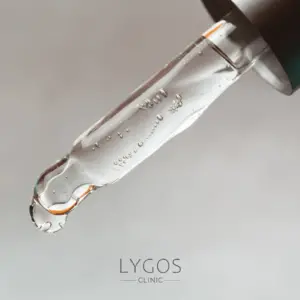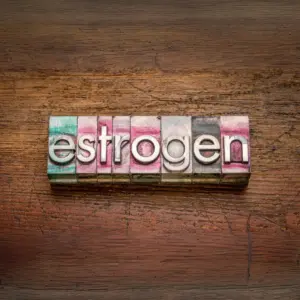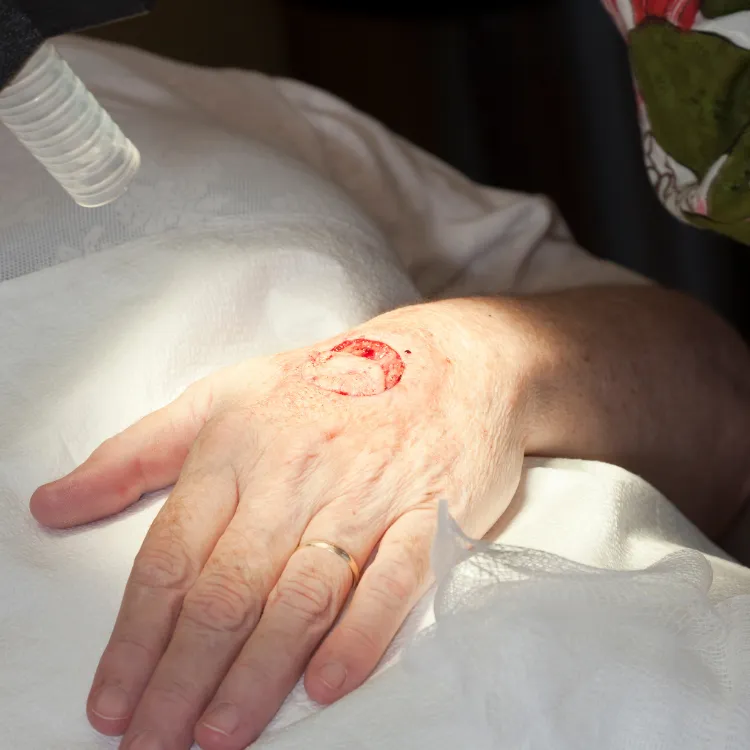Cryotherapy
Cryotherapy is commonly used to treat warts and various skin conditions, but it is also employed in managing certain cancers, including prostate, cervical, and liver cancer. This technique works by freezing and removing abnormal tissue and is also referred to as cryoablation in some medical contexts. Below, you’ll find everything you need to know about this treatment method.
Chose Your Topic
Get in Touch
Get professional treatments in Turkey at Lygos Clinic, offering effective, affordable treatments for a healthier and more aesthetically pleasing life.
You can contact us via WhatsApp and Instagram for a quick response.

What is Cryotherapy?
Cryotherapy is a medical treatment that involves freezing a skin lesion or abnormal tissue using extremely cold substances, most commonly liquid nitrogen. Argon gas can also be used for this purpose. The process destroys the targeted tissue, allowing healthy tissue to regenerate. It’s used for a range of conditions, including:
- Warts
- Precancerous lesions
- Skin cancers in early stages
- Skin growths and lesions
- Certain joint conditions
When a cryotherapy device is used, the freezing agent is applied under pressure to the affected area. The intense cold causes cell death in the targeted tissue, which the body then naturally eliminates. In cancer-related cases, a small incision may be made to allow deeper access to tumors.
How Does Cryotherapy Work?
The patient is examined before cryotherapy is applied. It is examined whether the patient is suitable for anesthesia and whether there is any problem for the procedure. The patient who has the necessary conversations with the specialist doctor can be taken into the procedure.
Cryotherapy is applied extremely cold to the area where the abnormal tissue is located. The cells in the area cannot withstand the extreme cold and die after a while. More than one substance can be used to create the extreme cold used in cryotherapy treatment. The prominent ones among these substances are as follows:
Liquid nitrous oxide
Argon gas
Liquid nitrogen

Who is Cryotherapy Suitable for?
Cryotherapy is effective for various dermatological, oncological, and musculoskeletal conditions, including:
- Genital warts
- Bone cancer
- Cervical cancer
- Hyperpigmentation and dark spots
- Skin tags and benign moles
- Prostate cancer
- Common warts
- Skin cancer
- Post-joint surgery inflammation
- Osteoarthritis (arthritis)
- Rheumatoid arthritis
- Precancerous skin lesions
While it’s commonly used in short sessions for dermatological issues, cryotherapy is also a supportive therapy for managing chronic joint pain and inflammation.

Wart Freezing
Wart freezing is a form of cryotherapy. The treatment involves applying intense cold to the wart using specialized tools such as cryotherapy devices or cotton swabs.
Caused by the HPV virus, warts can appear anywhere on the body and, while often harmless, may be cosmetically undesirable or uncomfortable. Cryotherapy is especially effective for genital warts and offers a less invasive alternative to electrocautery. Warts usually fall off days or weeks after treatment. Larger or clustered warts may require multiple sessions.
Cryotherapy Device
Cryotherapy devices are designed to treat skin conditions like warts, skin lesions, and, in some cases, musculoskeletal disorders such as osteoarthritis and rheumatoid arthritis. These devices help to destroy damaged tissue and minimize discomfort.
When used in the treatment of genital warts, cryotherapy devices reduce the risk of scarring. The effectiveness of the treatment often depends on the quality and model of the device used. For best results, choose clinics that use the latest technology and equipment.

Types of Cryotherapy
- Nitrogen can be used to freeze and destroy abnormal tissue. The use of extreme cold in treatments where argon gas is also preferred is called cryoblation or cryosurgery. Warts and pre-cancerous skin growths are treated in cryosurgery treatment, which should be performed by a specialist doctor.
- Another type of cryotherapy is cold water therapy. This type includes ice baths or cold showers. In the treatment method in which the body is immersed in cold water, the coldness of the water is between 10 and 15 degrees Celsius. The procedure, which lasts for an average of 15 minutes, is usually performed after exercise. In this way, pain is reduced.
- Ice application for sprains, fractures or injuries is also among the types of cryotherapy. This treatment method, which helps reduce pain, also reduces swelling and inflammation.
- Among the types of cryotherapy, there is also a method that covers the whole body. During whole body cryotherapy, a process that takes about 5 minutes takes place. Liquid nitrogen vapors are used in this treatment method, which is applied in a room cooled to minus -129 to -184 degrees Celsius. The head remains outside the room, while the rest of the body is subjected to extreme cooling. It is critical to take the necessary precautions with this type of cryotherapy.

Home Cryotherapy
Home cryotherapy kits are available for treating small skin lesions, warts, or moles on areas like the hands or arms. However, sensitive areas such as the genitals or lesions suspected of malignancy should never be treated at home due to the risk of complications.
While at-home cryotherapy can be cost-effective, it must be used with caution. Users should monitor the treated area for any side effects and seek medical attention if necessary.
Before and After Cryotherapy
Patients often notice a significant improvement in both the appearance and comfort of treated areas. Cryotherapy treats lesions like genital warts without leaving scars, which enhances both physical and psychological well-being.
In cases like cancer-related pain, cryotherapy can also help reduce discomfort and improve quality of life.


Black Skin After Cryotherapy
Cryotherapy is commonly used to treat sun, induced pigmentation and dark spots on areas such as the face and hands. These spots usually scab over and fall off within 1–2 weeks. The appearance of darkened skin (hyperpigmentation) after treatment is normal and typically fades over time.
Cryotherapy Costs
The cost of cryotherapy varies depending on:
- Type of condition (e.g., warts, precancerous lesions, tumors)
- Size and number of lesions
- Number of required sessions
- The clinic’s location and equipment used
- The physician’s expertise
More complex treatments, such as those for cancer or deep lesions, may be more costly. For personalized pricing, consult the expert team at Lygos Clinic

Get in Touch
Get professional treatments in Turkey at Lygos Clinic, offering effective, affordable treatments for a healthier and more aesthetically pleasing life.
You can contact us via WhatsApp and Instagram for a quick response.
Frequently Asked Questions About Cryotherapy
BLOG

Breast Lump | Types: Benign, Malign and Causes | LYGOS 2025
Breast Lump While cancer stands out as one of the most common health problems today, early diagnosis rates are also

What is Salicylic Acid? | How to Use & Benefits | LYGOS 2025
Salicylic Acid Salicylic acid is a powerful ingredient that is frequently encountered in today’s skin care products and has become

Estrogen Hormone | Effects on the Female Body | LYGOS 2025
Estrogen Hormone As the human body works in harmony with nature’s marvellous balance, hormones play a vital role in this






